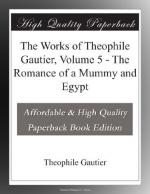|
This section contains 2,321 words (approx. 8 pages at 300 words per page) |

|
SOURCE: "Theophile Gautier and l'art pour l'art," in The Sewanee Review, Vol. XXXVI, No. 4, October, 1928, pp. 405-17.
In the following excerpt, Schaffer examines the aesthetic influence of the fifteenth- and sixteenth-century French poets on Gautier's poetry.
T.s. Omond Compares Gautier and Hugo:
Next to Hugo, Gautier is the ablest craftsman, the hardest worker, of the school. He tries experiments, not freakishly like Musset, but gravely and purposefully. He shares Hugo's delight in sound, his love of words for themselves. He ransacks the dictionary for striking expressions, and revels in reviving obsolete phrases. He carries pictorial description to its height, and his pages literally glow with colour. Like Hugo, too, he sometimes cares more for the music of a line than for its sense: take care of the words, and the meaning will take care of itself. In all this, he was Hugo's right-hand man, his ablest lieutenant...
|
This section contains 2,321 words (approx. 8 pages at 300 words per page) |

|


